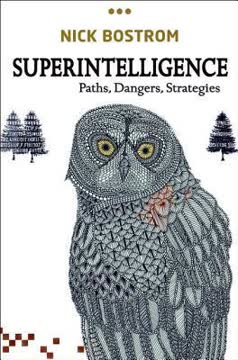Key Takeaways
1. The Journey from Water to Land: Tetrapods' Remarkable Transition
"To understand this tortuous layout, it's necessary to shrink me back down to a seven-week embryo, when my arms and legs were paddles rooted on a body that looked like a pot-bellied, hunchbacked minnow."
From fish to tetrapod: The transition of vertebrates from water to land is one of the most significant events in evolutionary history. This journey, which took place roughly 390-360 million years ago, involved a series of remarkable adaptations:
- Development of limbs from fins
- Evolution of lungs for air-breathing
- Modification of skull structure
- Changes in sensory systems to function in air
Key fossil discoveries: Paleontologists have unearthed crucial transitional fossils that illuminate this process:
- Tiktaalik: A fish with primitive limb-like fins
- Acanthostega: An early tetrapod with both lungs and gills
- Ichthyostega: One of the first tetrapods capable of limited terrestrial locomotion
These fossils reveal that the transition was gradual, with many intermediate forms exhibiting a mix of aquatic and terrestrial features. The process involved exaptations, where structures evolved for one purpose were co-opted for new functions on land.
2. Whales' Evolutionary Odyssey: From Land Back to Sea
"We are left still asking how our exapted ancestors came ashore, and how we came to thrive here."
Remarkable reverse transition: The evolution of whales represents a fascinating case of terrestrial mammals returning to an aquatic lifestyle. This process, occurring over approximately 55 million years, involved dramatic anatomical and physiological changes:
- Streamlining of body shape
- Development of tail flukes and flippers
- Adaptation of respiratory system for deep diving
- Evolution of echolocation in toothed whales
Key transitional fossils:
- Pakicetus: An early whale ancestor with wolf-like features
- Ambulocetus: The "walking whale" with both terrestrial and aquatic adaptations
- Basilosaurus: A fully aquatic early whale with vestigial hind limbs
The whale's evolutionary journey highlights the power of natural selection to dramatically reshape body plans, even reversing the direction of previous adaptations. It also demonstrates how existing structures can be repurposed for new functions in a changing environment.
3. Fossil Discoveries Illuminate Pivotal Transitions in Vertebrate Evolution
"Fossils overwhelmed them: almost every day they found a new whale, and the total would ultimately reach 349."
Fossil evidence crucial: The discovery of key transitional fossils has been instrumental in understanding major evolutionary transitions. These fossils provide tangible evidence of intermediate forms and help reconstruct evolutionary pathways.
Notable fossil discoveries and their significance:
- Archaeopteryx: Bridging the gap between dinosaurs and birds
- Australopithecus: Early hominids showing the transition to bipedalism
- Tiktaalik and Acanthostega: Revealing the fish-to-tetrapod transition
- Pakicetus and Ambulocetus: Illuminating the land-to-sea transition of whales
Technological advances: Modern paleontological techniques have greatly enhanced our ability to extract information from fossils:
- CT scanning to reveal internal structures
- Geochemical analysis to determine ancient environments
- Improved dating methods for more accurate timelines
These discoveries and techniques have not only filled gaps in the fossil record but have also provided crucial evidence supporting the theory of evolution and illuminating the processes of macroevolution.
4. The Power of Exaptation in Evolutionary Transitions
"Exaptations, now critical to their survival, look in hindsight like amazingly providential gifts."
Repurposing existing structures: Exaptation, the process by which features evolved for one purpose are co-opted for a different function, plays a crucial role in major evolutionary transitions. This concept helps explain how complex structures can arise without the need for simultaneous, improbable mutations.
Examples of exaptation in vertebrate evolution:
- Fish fins becoming tetrapod limbs
- Reptile jaw bones evolving into mammalian ear bones
- Feathers, initially evolved for insulation, being repurposed for flight
Evolutionary innovation: Exaptation allows for rapid evolutionary innovation by building upon existing structures. It demonstrates how seemingly improbable transitions can occur through a series of functional intermediates, each advantageous in its own right.
This process highlights the opportunistic nature of evolution, where structures are continually repurposed to meet new environmental challenges. Exaptation helps explain how complex features can evolve gradually, countering arguments of irreducible complexity often raised by critics of evolutionary theory.
5. Correlated Progression: The Symphony of Evolutionary Change
"Correlated progression, as we'll see, is a common feature of macroevolution."
Interconnected changes: Correlated progression refers to the coordinated evolution of multiple traits or systems within an organism. This concept emphasizes that evolutionary changes rarely occur in isolation but instead involve a suite of related adaptations.
Examples of correlated progression:
- Fish-to-tetrapod transition: simultaneous changes in limbs, skull, and respiratory system
- Evolution of powered flight: coordinated changes in bone structure, metabolism, and sensory systems
- Whale evolution: synchronized modifications in skeletal structure, physiology, and sensory organs
Evolutionary constraints and opportunities: Correlated progression highlights both the constraints and opportunities in evolution:
- Constraints: Changes in one system may necessitate modifications in others
- Opportunities: Coordinated changes can open up new ecological niches
This concept underscores the complex interplay between different aspects of an organism's biology during major evolutionary transitions. It helps explain how seemingly improbable transformations can occur through a series of interconnected, incremental changes.
6. Punctuated Equilibrium vs. Gradual Evolution: Debating the Pace of Change
"According to punctuated equilibrium (the name Gould and Eldredge put to their hypothesis), most changes happen as species originate, not during their lifetime."
Contrasting models: The debate between punctuated equilibrium and gradual evolution addresses the pace and pattern of evolutionary change:
- Punctuated equilibrium: Rapid bursts of change followed by long periods of stasis
- Gradual evolution: Slow, continuous change over time
Evidence and implications:
Punctuated equilibrium:
- Supported by apparent sudden appearances of new forms in the fossil record
- Suggests species-level selection may be important in macroevolution
Gradual evolution:
- Consistent with traditional Darwinian theory
- Supported by some fine-grained fossil sequences and studies of living populations
Synthesis: Many researchers now recognize that both patterns occur in nature, with different lineages exhibiting different tempos of change. The debate has stimulated new research into the dynamics of speciation and the factors influencing evolutionary rates.
This ongoing discussion highlights the complexity of evolutionary processes and the need for multiple explanatory models to fully understand the patterns observed in the history of life.
7. Macroevolution: Unraveling the Complexities of Major Evolutionary Transitions
"Rather than simplistic leaps of evolution-on-demand, they will be extensions of histories reaching back hundreds of millions of years."
Beyond microevolution: Macroevolution deals with large-scale evolutionary changes, including the origin of new taxa and major evolutionary transitions. It involves processes that may not be fully explicable by extrapolating from small-scale, generation-to-generation changes (microevolution).
Key aspects of macroevolution:
- Origin of novel body plans and structures
- Major ecological transitions (e.g., water to land, land to air)
- Large-scale patterns in the diversity and disparity of life
Integrative approach: Understanding macroevolution requires synthesizing evidence from multiple fields:
- Paleontology: Fossil evidence of past life forms
- Comparative biology: Studying similarities and differences among living organisms
- Developmental biology: Investigating how changes in development produce evolutionary novelties
- Molecular biology: Revealing genetic mechanisms underlying major transitions
This multidisciplinary approach has led to new insights into how major evolutionary innovations arise and how lineages diversify over long time scales. It emphasizes the importance of considering both intrinsic (genetic, developmental) and extrinsic (environmental, ecological) factors in shaping the history of life.
8. The Role of Genes and Development in Shaping Evolutionary Pathways
"A generous slice of this kind of change—from a fingerless lobe-fin to a tetrapod with sturdy limbs and no gills, or from a hoofed land mammal to a big fluked whale committed to the sea—took less than 15 million years in both cases."
Genetic underpinnings: The discovery of key developmental genes, particularly Hox genes, has revolutionized our understanding of how major evolutionary changes occur. These genes play crucial roles in body patterning and can produce significant morphological changes when altered.
Important concepts in evolutionary developmental biology:
- Gene duplication and divergence as sources of evolutionary novelty
- Changes in gene regulation as a major driver of morphological evolution
- Developmental constraints shaping evolutionary possibilities
Evo-devo insights: The field of evolutionary developmental biology (evo-devo) has provided key insights into major transitions:
- How changes in Hox gene expression can transform fins into limbs
- The role of regulatory changes in the evolution of whale body plans
- How modifications in developmental timing (heterochrony) can produce significant evolutionary changes
These findings highlight how relatively small genetic changes can lead to major morphological innovations, helping to explain the apparent rapidity of some evolutionary transitions in the fossil record.
9. Environmental Factors and Mass Extinctions as Drivers of Macroevolution
"Oceans suddenly robbed of oxygen or overwhelmed by carbon dioxide, abrupt atmospheric greenhouses and icehouses can all knock out common, dominant organisms, leaving ecosystems open for new experiments by the survivors."
Environmental influence: Large-scale environmental changes play a crucial role in shaping the course of evolution, often driving major transitions and influencing the pace of evolutionary change.
Key environmental factors:
- Climate change (e.g., global warming, ice ages)
- Changes in atmospheric composition
- Plate tectonics and changes in ocean currents
- Asteroid impacts and other catastrophic events
Mass extinctions as evolutionary catalysts: Major extinction events have repeatedly reshaped the diversity of life on Earth:
- End-Permian extinction: Wiped out ~95% of marine species, setting the stage for the rise of dinosaurs
- End-Cretaceous extinction: Eliminated non-avian dinosaurs, allowing for the radiation of mammals
These events create ecological opportunities for surviving lineages, often leading to rapid diversification and the evolution of novel adaptations. They demonstrate how external factors can dramatically alter evolutionary trajectories and highlight the contingent nature of evolutionary history.
10. Convergent Evolution and Evolutionary Constraints: Nature's Limits and Possibilities
"While other animals claw or climb or run with their distal pectoral appendages, we use ours to turn clay into pots, focus telescopes, paint gods."
Similar solutions: Convergent evolution, where similar traits evolve independently in different lineages, reveals both the power of natural selection and the constraints within which it operates.
Examples of convergent evolution:
- Streamlined body shapes in aquatic animals (fish, whales, ichthyosaurs)
- Flight in insects, pterosaurs, birds, and bats
- Camera-like eyes in vertebrates and cephalopods
Evolutionary constraints: Despite the diversity of life, certain patterns and limitations are evident:
- Developmental constraints: The way organisms develop limits possible variations
- Physical constraints: Laws of physics and chemistry restrict biological possibilities
- Historical constraints: An organism's evolutionary history limits future options
These constraints help explain why certain forms repeatedly evolve (convergent evolution) and why some theoretically possible designs are never realized in nature. Understanding these limits provides insight into the predictability and repeatability of evolutionary processes.
The interplay between convergence and constraint demonstrates both the flexibility and the limitations of evolutionary processes, highlighting how similar environmental pressures can produce similar solutions across diverse lineages.
Last updated:
FAQ
What's At the Water's Edge about?
- Exploration of Evolutionary Transitions: The book examines the significant evolutionary shifts from aquatic to terrestrial life and back, focusing on species like fish, tetrapods, and whales.
- Scientific Storytelling: Carl Zimmer combines engaging narratives with scientific detail, highlighting the history and discoveries in evolutionary biology.
- Interconnectedness of Life: It emphasizes the connections between species and how environmental adaptations have shaped evolution on Earth.
Why should I read At the Water's Edge?
- Engaging Writing Style: Zimmer's lucid writing makes complex scientific concepts accessible and enjoyable for a wide audience.
- Current Scientific Insights: The book offers up-to-date information on macroevolution, bridging historical context with modern understanding.
- Inspiration for Further Learning: It serves as a compelling introduction to evolution, encouraging readers to explore more about life's history and science.
What are the key takeaways of At the Water's Edge?
- Understanding Macroevolution: The book clarifies macroevolution as large-scale changes leading to new species and body plans.
- Importance of Fossil Evidence: Fossils like Acanthostega and Ichthyostega fill gaps in understanding evolutionary transitions.
- Role of Genetics and Development: Modern genetics and embryology, particularly Hox genes, have reshaped our understanding of evolution.
How does At the Water's Edge explain the transition from fish to tetrapods?
- Fossil Evidence: Key fossils show anatomical changes, such as limb development and gill loss, during this transition.
- Genetic Mechanisms: Hox genes play a significant role in limb development, explaining how fins evolved into arms and legs.
- Environmental Factors: Coastal lagoons provided new opportunities for adaptation, driving the evolution of tetrapods.
What role do Hox genes play in evolution, according to At the Water's Edge?
- Blueprint for Development: Hox genes determine body plans during embryonic development, influencing limb formation.
- Evolutionary Innovations: Changes in Hox gene expression can lead to significant innovations, like the development of fingers.
- Common Ancestry: Similar Hox genes across species indicate shared evolutionary history, tracing tetrapods back to fish ancestors.
How does At the Water's Edge explain the return of mammals to the sea?
- Evolutionary Reversal: Some mammals, like whales, evolved from land-dwelling ancestors back to aquatic life, showing evolutionary flexibility.
- Anatomical Adaptations: Changes like streamlined bodies and specialized limbs for swimming demonstrate evolution's ability to reshape organisms.
- Intelligence and Social Behavior: The return to the sea influenced cetaceans' cognitive abilities, linking environment and behavior.
What is the significance of Acanthostega in the study of evolution?
- Transitional Fossil: Acanthostega provides insight into the evolution of tetrapods from lobe-finned fishes, showing both fish-like and tetrapod-like features.
- Eight Digits: Its eight fingers challenge assumptions about digit numbers in early tetrapods, suggesting variability in early evolution.
- Understanding Adaptations: Studying Acanthostega helps researchers understand early tetrapod adaptations, particularly in locomotion and respiration.
What is the significance of Pakicetus in At the Water's Edge?
- Oldest Known Whale: Pakicetus is the oldest known whale, providing crucial insights into the transition from land mammals to aquatic life.
- Fossil Evidence: Its teeth and skull structure reveal adaptations for a semi-aquatic lifestyle, linking terrestrial mammals to aquatic descendants.
- Evolutionary Implications: Pakicetus challenges previous notions about whale evolution timelines, suggesting an earlier transition to aquatic life.
How does At the Water's Edge address the concept of exaptation?
- Definition of Exaptation: Traits evolve for one purpose but later find new uses, like limbs evolving for walking and later adapting for swimming.
- Examples in Evolution: Features like whale flippers evolved from structures originally designed for different functions, showing evolutionary flexibility.
- Significance in Evolutionary Theory: Exaptation challenges the idea that every trait has a single purpose, emphasizing evolutionary complexity.
How does At the Water's Edge address the concept of vestigial structures?
- Definition of Vestigial Structures: Remnants of organs or features that once had a function but have lost their original purpose.
- Examples in Whales: Vestigial legs in whales indicate their evolutionary past, crucial for understanding the land-to-sea transition.
- Implications for Evolution: Vestigial structures support evolution by showing how species retain ancestral features while adapting to new environments.
What are the main evolutionary pressures discussed in At the Water's Edge?
- Environmental Changes: Climate and habitat changes create challenges and opportunities, driving significant evolutionary adaptations.
- Predation and Competition: These factors influence evolution, with organisms better able to escape predators or exploit resources thriving.
- Social Structures: Social dynamics can drive complex behaviors and intelligence, as seen in dolphins and other cetaceans.
How does At the Water's Edge connect the evolution of whales to broader themes in macroevolution?
- Patterns of Change: Whale evolution is part of a larger pattern of change, connected to other species' transitions like tetrapods.
- Interconnectedness of Species: Whale evolution is part of a complex web of life, emphasizing species' interconnected evolutionary paths.
- Implications for Understanding Evolution: Examining whale evolution provides insights into macroevolution mechanisms, informing biodiversity and conservation discussions.
Review Summary
At the Water's Edge is highly praised for its clear explanations of macroevolution, focusing on tetrapods and whales. Readers appreciate Zimmer's engaging writing style, blending science with historical context. The book explores concepts like exaptation and correlated progression, offering insights into evolutionary biology. While some find certain sections dense or technical, many consider it a fascinating and well-written account. Reviewers commend Zimmer's ability to make complex topics accessible and entertaining, though a few note it may be challenging for complete beginners.
Similar Books








Download PDF
Download EPUB
.epub digital book format is ideal for reading ebooks on phones, tablets, and e-readers.






